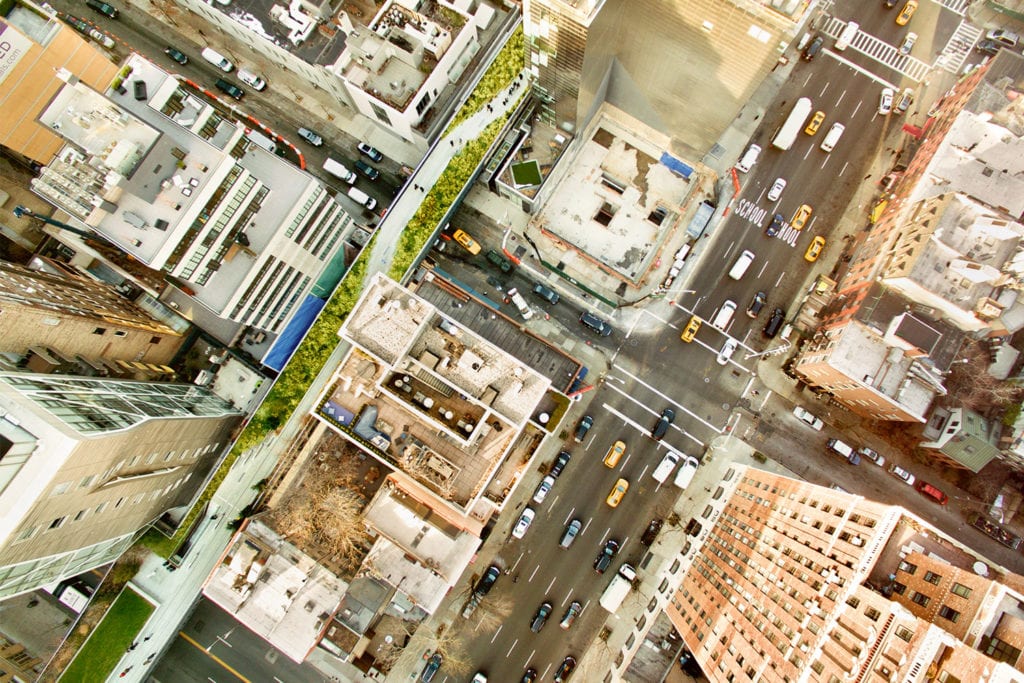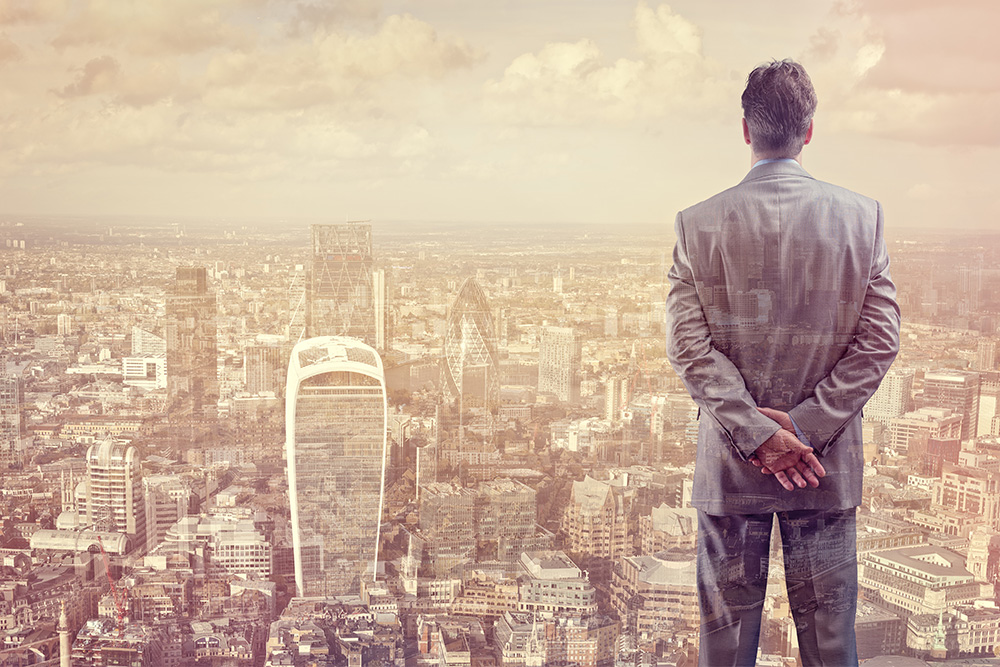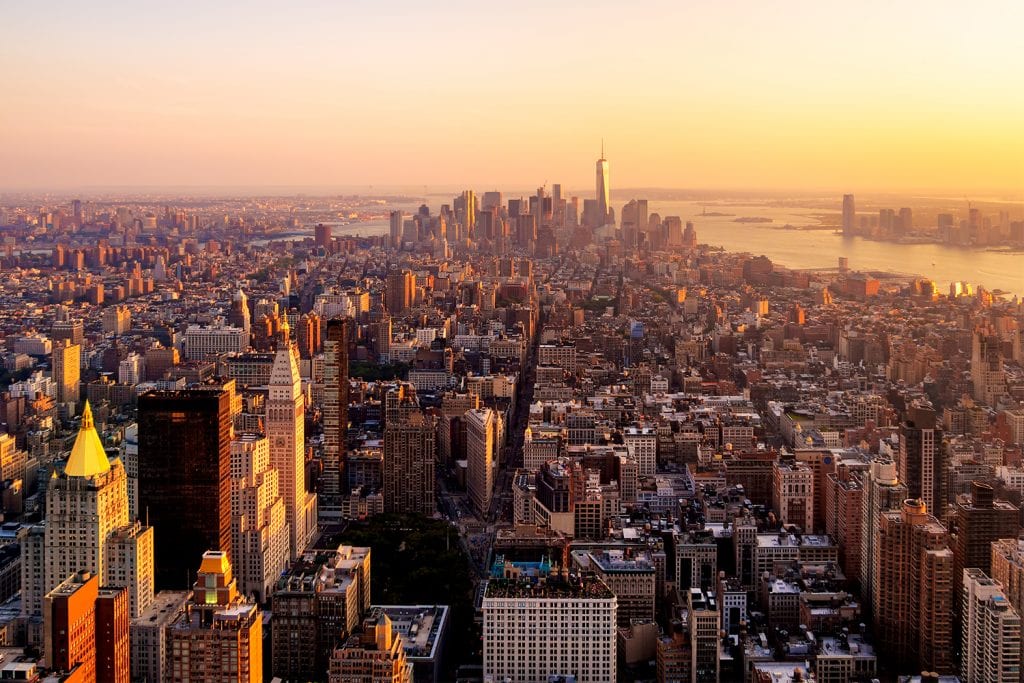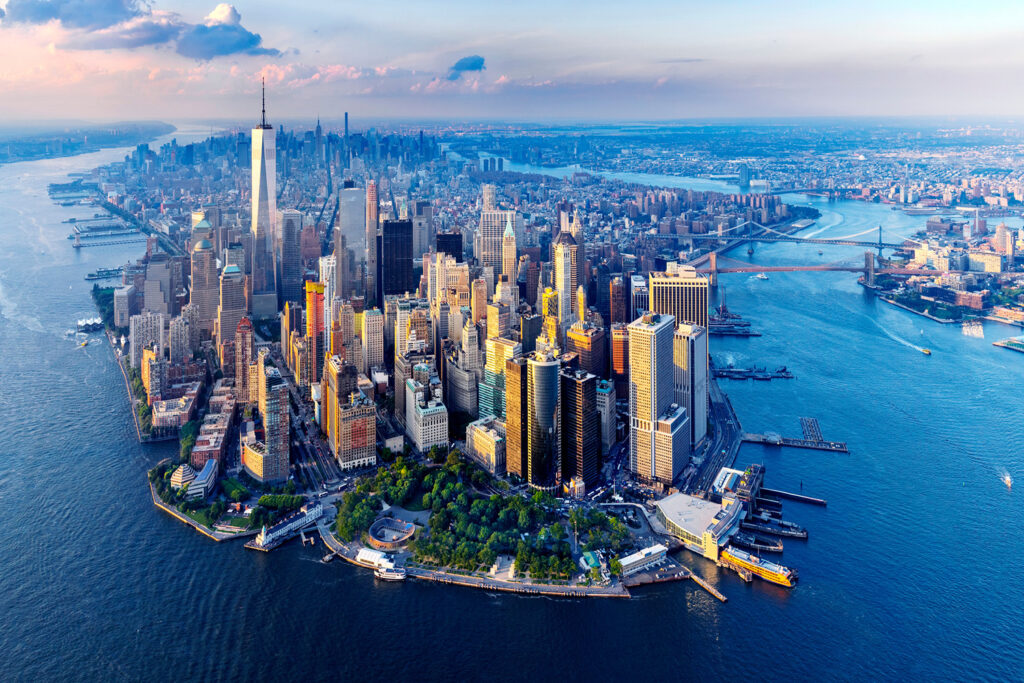Our Predictions for New York City in 2018
Now in its third year, our city predictions series from Kate Ascher and the Cities team in New York explores the hot topics for New York City in 2018.

It’s humbling to look back at our predictions from years past. Some hot button issues persist – such as the ongoing challenge of addressing housing affordability – while others did not turn out the way we expected. A year ago, we predicted that the mayoral race would play a large role in 2017, but we saw Mayor de Blasio cruise to an easy re-election, fueled in part by his vocal and popular opposition to President Trump.
Since Trump’s surprising election, there has been a great deal of uncertainty surrounding the issues that matter to New York (and U.S. cities at large), including immigration, health care, and the environment. Initial optimism that the President would boost infrastructure spending has faded as the administration has failed to produce an infrastructure funding proposal. The recently-approved tax plan has injected even more uncertainty into city planning as not only does it effectively devalue the private activity bonds used to finance affordable housing, hospitals and infrastructure, but by blowing up the federal deficit, the tax plan creates mounting pressure to cut funding for public services and infrastructure funding.
Yet despite the uncertain state of affairs, there are numerous bright spots emerging as New York City demonstrates leadership on the global stage. Buro Happold has been a proud contributor to many of the City’s strategic planning initiatives, which are starting to bear fruit as they are implemented. From boosting employment in key sectors such as life sciences, to dramatically reducing greenhouse gas emissions, and modernizing waste hauling practices.
This year, I have enlisted the help of my colleagues to share their New York City predictions in three key areas:
Economic Development
by Alexan Stulc
Infrastructure will play a significant role in New York City this year. The looming L-train shutdown, scheduled for 2019, has already started to impact rents and home sales in North Brooklyn and we expect this trend to continue as the deadline draws closer. It is more difficult to anticipate the effect of the City’s mitigation plan, which includes HOV3+ lanes on the Williamsburg Bridge, new bus routes between Brooklyn and Manhattan, and increased subway service on nearby lines.
Conversely, the NYC Ferry service has announced plans to increase current capacity and extend service to the Bronx and Lower East Side, which will bring new development opportunities to blocks within walking distance of a ferry stop. Likewise, we expect to see growing private sector interest in East Harlem as preliminary design work begins on phase two of the Second Avenue Subway. Coupled with the recently approved, albeit highly contentious East Harlem Rezoning, the neighborhood is primed for private investment. This will be a major test of Mayor de Blasio’s Mandatory Inclusionary Housing (MIH) policy to retain affordability amidst rapid development.
Overall, we expect 2018 to be a tumultuous year for public transit. Last year we saw mounting evidence of faltering subway system brought about by decades of poor politics and decision making. While many transit experts have weighed in on possible solutions, tangible improvements within the next year are not likely. New York City—and the surrounding region—was also blessed with a late-December exchange in which the Trump administration denied previously-promised federal funding for the Gateway Tunnel, a critically and long-overdue expansion and renovation of the Northeast Corridor rail line between New York and New Jersey. Federal funding or not, it appears that the project is still moving forward, but the sentiment expressed by this decision makes us anxious about what Trump’s infrastructure plan really entails. Our prediction? Nothing of merit.
Sustainability
by Chris Rhie
2018 will be the year of the electric vehicle. There is a tremendous amount of momentum on the product side, with the launch of the first mass market vehicles with in excess of 200 mile ranges and commitments by the world’s largest auto manufacturers to offer numerous vehicles with electric drivetrains within the next few years – even including commercial trucks and semi-trailers. There is also a climate imperative, as electric vehicles are an essential component of the City’s strategy to reduce greenhouse gas emissions in alignment with the Paris Climate Agreement.
To achieve that end, the City recently launched the NYCx Moonshot Challenge to test breakthrough technologies and business plans to accelerate electric vehicle charging. As we learnt from developing an implementation plan in Berlin, deploying charging infrastructure in an urban environment is a complex endeavor. Besides the technical challenges posed by adding intensive power demands to electrical networks, uncertain charging demand can prevent property owners from taking the financial risk of allocating space for and investing in charging infrastructure. And there are also fundamental urban policy questions to resolve, such as how many public resources to devote to private vehicles, even if they are electric. But there is also tremendous opportunity to promote shared ownership models, connect to transit and bike share, and enhance citywide mobility and access.
Urgency is mounting for New York officials to take action. Part of the L-train shutdown mitigation plan that Alexan discussed includes the purchase of 200 diesel buses, which led elected officials to demand electric buses. Such a move would be in line with the commitment of global cities to buy only zero-emission buses from 2025 (including the cities of our sister offices in London and Los Angeles). Indeed, it is the convergence of a number of urgent issues, including climate change and post-disaster recovery efforts, which will propel electric vehicles to the fore in 2018.
Mobility
by Michael King
Firstly, while I will agree with Chris that electric vehicles will be a hot topic in 2018. Vehicles, electric or otherwise, are but one small sliver of New York’s transportation ecosystem. In order to thrive, we need to maintain that ecosystem’s lifeblood: transit service and pedestrian access.
Now, onto mobility. In 2018 there will be a confluence in terrorism security, Vision Zero, congestion pricing, and subway financing. Wait, what? First, we are already seeing the NYPD and DOT working together to limit the ability of drivers to wreak havoc on innocent and unsuspecting people walking and cycling. More and more parts of the city will be protected from drivers, errant and otherwise through bollards and “secure zones.” Even the Regional Plan Association has called for an auto-free Manhattan below Worth Street (home of the courts, government offices, historic places, Wall Street, and World Trade Center).
This emphasis on security will spill over into safety, aka Vision Zero. Speed kills, so kill your speed. We should see a lot more “safety” projects sold as “security.”
Simultaneously, the subway system will continue its downward spiral and more and more people will conclude that money is the answer. Some say tax the rich, some say raise the sales tax, some say tax congestion, some say tax shared rides (Uber and Lyft), some say cut costs, some say charge developers more (the value capture Alexan referenced above).
The proposal to tax shared rides is interesting. Because millennials are over-represented in sharing rides, and millennials are a punching bag, there is a certain amount of schadenfreude support. But I think it is a ruse to get Uber and Lyft to lobby for congestion pricing. A congestion tax has no natural supporters (other than people who attend TranspoCamp), so it needs to find others. What better way than to convince your enemy’s enemy that you are their friend?
However it happens, enough people will recognize that without a functioning subway system, NYC grinds to a halt.









